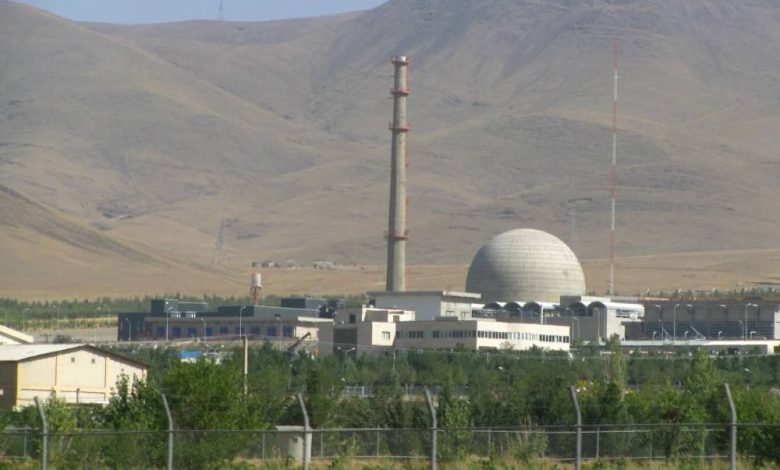Tehran’s Demonization of MEK Is A Sign of Value of Its Nuclear Revelations

Iran: Arak heavy water reactor
Tehran’s Demonization of MEK Is A Sign of Value of Its Nuclear RevelationsWritten by
Shahriar Kia
In 2002, the People’s Mojahedin Organization of Iran (PMOI/MEK) revealed the first key details about the Iranian regime’s nuclear program. Since then, that issue has remained a top-line concern for policymakers working on Iran’s strategy in the United States, the European Union, and much of the world. The MEK, meanwhile, has continued unveiling new details about Iran’s illicit activities, both new and old.
Reports prepared by the Iranian Resistance have identified undeclared nuclear sites and have outlined the organizational structure of institutions that are dedicated to the weaponization of the regime’s nuclear research – institutions that remained active long after the conclusion of international negotiations that delayed to some extents Tehran’s progress toward the acquisition of a nuclear bomb.
The regime has tried to deceive the world community through its persistent denials and its public insistence that even the most advanced and provocative nuclear activities are meant only for power generation and other civilian functions. This narrative was repeated for an international audience on Sunday when Sputnik, the Russian state news agency, published an interview with the new head of the regime’s Atomic Energy Organization, Mohammad Eslami.
Unsurprisingly, Eslami repeated this bogus claim that “Under the law of the Islamic Republic and the fatwa of Iran’s supreme leader, the development of nuclear weapons is prohibited,” he said. “Therefore, our nuclear program is exclusively peaceful, and we will enrich uranium in a way to avoid crossing the permissible level.”
The fatwa in question was issued by Ali Khamenei sometime in the mid-1990s but was first publicly announced in 2003, coincidentally right at the time when international pressure on the newly-revealed clandestine program was ramping up. The religious edict vaguely deems nuclear weapons to be at odds with the Muslim faith, thereby making them off-limits to Iran as an Islamic theocracy. However, the regime keeping its power stays above all rules and laws, and this fatwa was another bogus gesture to deceive the international community.
In February, the regime’s Intelligence Minister Mahmoud Alavi boasted, “The fatwa forbids the production of nuclear weapons, but if they push Iran in those directions, it is not Iran’s fault,” he said. “Those who pushed Iran in that direction will be to blame.”
In other words, he acknowledged that the regime was willing to become a nuclear-armed state. But of course, this aligns with the warnings that have been offered on countless occasions over the years by the Iranian Resistance.
The regime has continued its efforts to delegitimize the MEK’s findings and demonize itself on the international level.
This trend, too, was on display in Eslami’s Sputnik interview. When asked directly about issues relating to undeclared nuclear sites and the regime’s refusal to come clean with the International Atomic Energy Agency about them, Eslami attempted to deflect blame to the MEK and accuse it of disseminating “false news.”
“They keep trying to present some fake documents, allegedly satellite photos, the authenticity of which is not confirmed,” Eslami said. “The photos were taken in the 1990s, but they are presented as recent ones. The IAEA, as an international body, should not fall for these tricks and become a puppet in the hands of this terrorist group.”
Iran: MEK Revelations Played Key Role in Preventing Mullahs to Get Nuclear Bomb
In fact, the MEK has never misrepresented the timeframe for any of its findings. It has prepared reports based on satellite images spanning many years at the same sites and has thereby demonstrated that Tehran has gone to great lengths to demolish and sanitize the sites of clandestine nuclear activity once that activity came to the international community’s attention. Eslami’s comments are part of the regime’s strategy to deceive the international community.
The IAEA has reported extensively on Tehran’s refusal to cooperate over this issue, and at no point did it do so while operating on the assumption that the undisclosed sites, in and of themselves, represent an imminent threat of Iran’s nuclear breakout. The real significance of the issue is that it reveals the lack of comprehensive international understanding of what Tehran had accomplished in the nuclear field before the 2002 revelations, as well as between that time and the signing of the 2015 Iran nuclear deal. Undisclosed nuclear sites also point to a broader pattern of the regime’s evasiveness and deceit, and it is this pattern, more than anything else, that the MEK has sought to highlight for policymakers working on the Iran nuclear file.
With practically every revelation that the Iranian Resistance offers, there comes an ineffectual rebuttal from the Iranian regime and a blatant attempt at poisoning the well. The MEK’s intelligence reports have been accurate, while Tehran’s denials and deflections have recognizably lacked in evidence, heavy on rhetoric, and dependent upon dismissing its critics with labels.”
The international community should take the regime’s nuclear threat seriously and impose sanctions to curb its activities. They should know how deeply the regime is threatened by the revelations still coming from the MEK.

